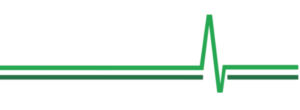Key facts about PCBs
PCBs can be classified by the number of copper layers and by assembly technique – either THT (Through-Hole Technology) or SMD (Surface-Mounted Device) technology. In the latter case, the components are soldered directly onto a copper layer to save space. Many PCBs use both technologies simultaneously.

Single-layer PCBs
The simplest form of PCB is the single-layer (or monolayer) PCB, which consists of a layer of copper on one side of a substrate.

Double-layer PCBs
For more complex circuits with more compact designs, there is typically one copper layer on either side of the board, which allows a denser network of connections. The conductive tracks (traces) on the top and bottom are connected by galvanically generated interlayer connections (vias).

Multi-layer PCBs
Multi-layer PCBs have the most complex structures of any circuit boards, with more than two copper layers separated by layers of insulating substrate. There can be vias connecting the traces of any two levels. This type of PCB is typically found in highly compact consumer products (PCs, laptops, mobile phones) and is less common in classical industrial electronics.
Currently, we only offer a PCB replacement service for single-layer and double-layer PBCs, since these technologies are primarily used in older machines and systems for which support has been discontinued.


